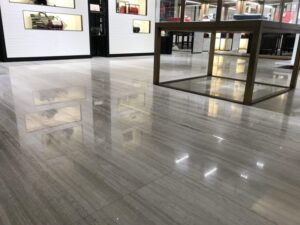-
Mon – Fri: 8 AM – 5 PM
Sat: By Appointment
-
FREE Estimate
(936) 856-8610
 Limestone, with its timeless beauty and natural elegance, has been a popular choice for various architectural and decorative purposes for centuries. From grandiose monuments to intricate interior designs, limestone exudes charm and sophistication. However, like any natural material, limestone requires proper care and maintenance to preserve its aesthetic appeal and longevity. One crucial aspect of maintaining limestone is sealing it. But why does limestone need to be sealed, and is it always necessary? Let’s delve into the intricacies of limestone sealing to understand its significance.
Limestone, with its timeless beauty and natural elegance, has been a popular choice for various architectural and decorative purposes for centuries. From grandiose monuments to intricate interior designs, limestone exudes charm and sophistication. However, like any natural material, limestone requires proper care and maintenance to preserve its aesthetic appeal and longevity. One crucial aspect of maintaining limestone is sealing it. But why does limestone need to be sealed, and is it always necessary? Let’s delve into the intricacies of limestone sealing to understand its significance.
The straightforward answer is no. Sealing limestone should be approached on a case-by-case basis, taking into account various factors such as customer preferences, budget constraints, future maintenance requirements, and performance goals. While sealing can offer benefits, it’s not always mandatory, particularly in certain situations like exterior applications.
Take, for example, the climate in southeast Texas, where frequent rain, high humidity and strong UV rays prevail. In such environments, sealers may not be recommended for exterior limestone surfaces because UV rays break down sealers quickly, diminishing their effectiveness. Moreover, sealers can impede the natural drying process of limestone, potentially leading to saturation and deterioration of the stone over time.
There are three primary categories of sealers for natural stone, each with its unique characteristics and functions:
So, why should people consider sealing their limestone surfaces? The advantages are manifold:
Ultimately, the decision to seal limestone should be based on careful consideration of various factors and individual preferences. While sealers can offer valuable benefits in terms of protection and aesthetics, proper maintenance and cleaning routines remain paramount in preserving the beauty and longevity of limestone surfaces. Your lifestyle, environmental factors, and performance expectations should guide your approach to limestone care. By understanding the nuances of limestone sealing and choosing the appropriate sealers, you can ensure that your limestone surfaces retain their exquisite charm for years to come.